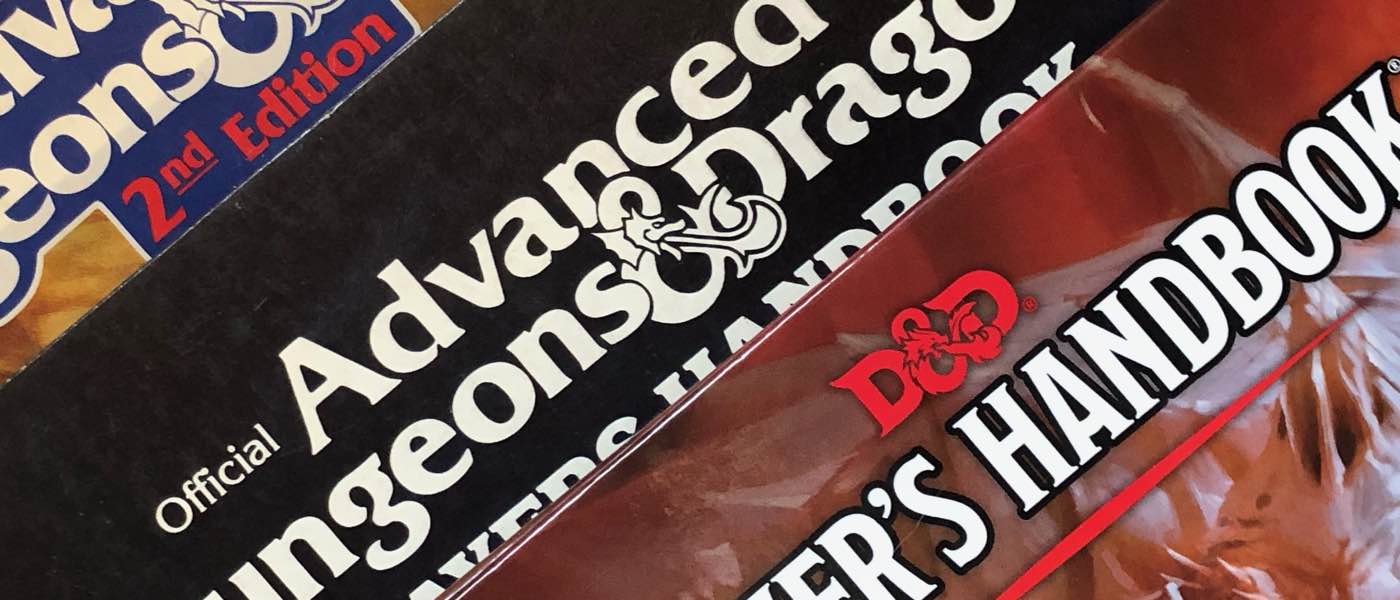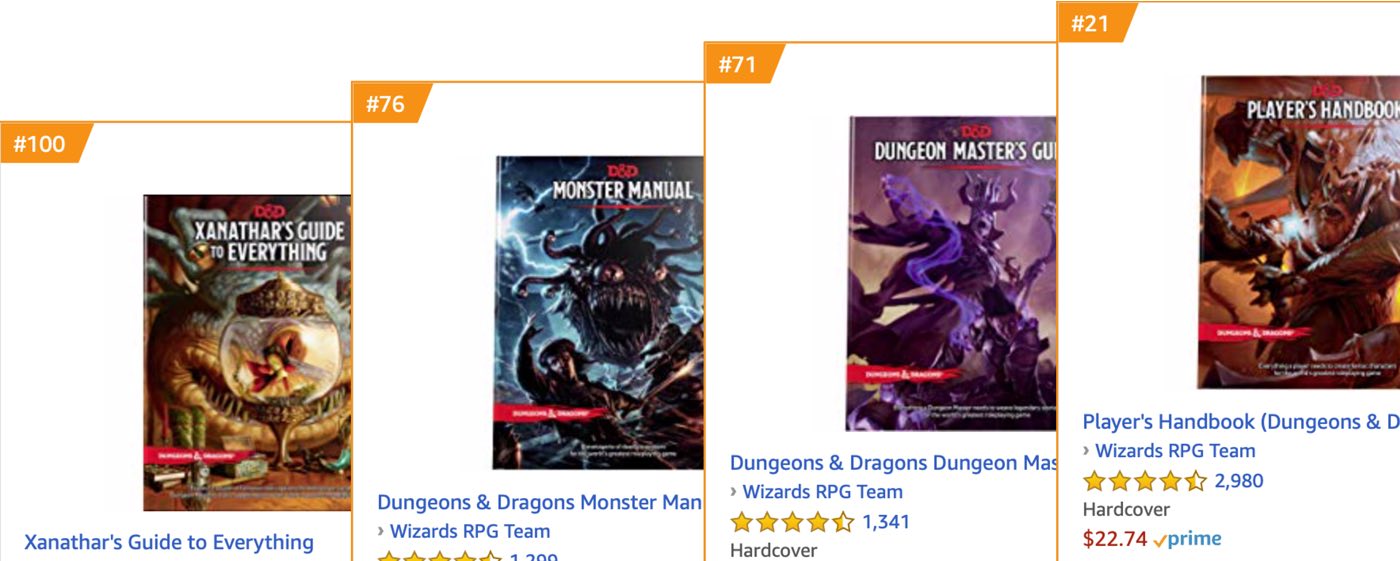How Well is 5th Edition Dungeons & Dragons Selling?
I Am On a Curiosity Voyage
Wizards of the Coast (WotC) released the 5th Edition of Dungeons & Dragons on a rolling schedule in 2014, starting with the beginner boxed set in June and culminating with the the Dungeon Master’s Guide in December. In the four and a half years since then 5th Edition has obviously put Dungeons & Dragons back at the top of tabletop roleplaying sales. It’s undoubtedly selling well, but how well?
I wanted to dig into this question a bit to satisfy my own curiosity. Note that I’m not an industry insider, and I only had access to publicly-available information. That said, I have wherever possible avoided anecdotal evidence in favor of hard numbers. Please also note that this is not an examination of the subjective qualities of the game itself. Whether 5th Edition D&D’s rules are wonderful or terrible in relation to its forbears is a question outside the scope of this inquiry.
Something is Going On Here
In 2016 Mike Mearls of WotC tweeted: “5e lifetime PHB sales > 3, 3.5, 4 lifetime,” meaning that the 5th Edition Player’s Handbook had by then outsold each of the previous versions (not including AD&D 1 & 2, for which WotC did not have exact figures). This was particularly impressive because at the time of the Mearls tweet 5th Edition had only been in print for two years. Previous editions had print runs of three years (3ed), five years (3.5ed) and six years (4ed) respectively.
But how does this compare to the glory days of the early 1980s? According to WotC, 2017 was the best D&D sales year in the company’s history. TSR kept poor records, but WotC is confident the 2017 figures are also higher than any from the TSR era (1974-’97).

Inflation and pricing are factors, though. One 1982 dollar, for example, is worth $2.57 in 2017 dollars. And 5th Edition books are priced higher than those of earlier versions. So it’s possible that in sheer unit sales 5th Edition has outsold versions 3, 3,5, and 4, but not AD&D 1 and 2, or any of the beginner boxed sets.
That’s less likely when you take into account the enormous growth since that 2016 Mearls tweet. According to WotC, in 2017 the D&D brand had a 44 percent sales growth over 2016. “Brand” encompasses everything D&D-related, from rulebooks to minis to revenues from t-shirts and other licensed products. But 44 percent isn’t a jump, it’s a leap.
You’re Gonna Be So Cool Now, It’s Ridiculous
None of this gives us a perfect picture of actual books in the hands of players, but it’s not a stretch to say that there are more D&D players than ever before. And that’s exactly what WotC has asserted: according to the company’s estimates in 2017 there were 12-15 million people playing D&D in North America alone, making D&D more popular now than at any other time in its history.
Not all of those people are using the 5th Edition rules, but by all available indicators it has ended the Edition Wars. In the first quarter of 2015 5th Edition D&D games accounted for 26% of the games available on Roll20, the most prominent VTT (virtual tabletop) roleplaying platform. That figure has continued to climb, and in Q1 2018 it reached 61%, with Pathfinder a distant second at 10%.

This ascent is even more impressive when you factor in the growth of VTT as a whole. In July, 2015 Roll20 had a million users. By February, 2018 it had three million users. Fantasy Grounds, the platform’s biggest competitor, increased the number of game sessions played from ~350k in 2015 to ~620k in 2017.
The VTT user base is not necessarily representative of the entire tabletop roleplaying audience for a variety of reasons: many gamers prefer the face-to-face interaction of analog roleplaying, online platforms may skew toward more hard-core gamers who are willing to play with people they don’t already know, online venues like Roll20 and Fantasy Grounds may also disproportionately attract traditional classes-and-levels sorts of games that benefit from automation more than lower-crunch systems, and network effects are more powerful the larger the user base. The latter point is particularly important, because it means that as 5th edition has become more popular, that popularity becomes self-reinforcing.
The above-listed caveats make it difficult to extrapolate VTT findings to the broader tabletop RPG environment, but the numbers are impressive. In three years Roll20 tripled its user base, and 5th edition D&D increased its presence sevenfold. Meanwhile on Fantasy Grounds the number of games played nearly doubled in two years and 5th Edition’s share of those games climbed from 53% to 64%.
Going by VTT statistics, in 2019 roughly 2/3 of tabletop roleplaying sessions will be played using 5th Edition D&D rules. Even though it’s unlikely that VTT statistics are a precise indicator of what’s being played on dining room tables across the land, they’re a useful indicator of broad trends.
The Gate… I Opened It
Tabletop roleplaying is on an extended ascent, and 5th Edition D&D is undoubtedly the dominant game. It doesn’t appear to have plateaued yet, either. In 2014 and 2015 no tabletop RPG appeared in the Amazon Books best seller top 100. In 2016 the 5th Edition Player’s Handbook appeared at #92. In 2017 it rose to #40. In 2018 the Player’s Handbook climbed #21. Perhaps more significantly, the Dungeon Master’s Guide jumped in at #71, the Monster Manual made the charts at #76, and the Xanthar’s Guide to Everything supplement even squeezed in at #100.

Amazon is the ultimate broad-base retail outlet. If it’s selling increasingly-impressive volumes of 5th Edition books each year, the game’s ability to bring newcomers into the tabletop roleplaying hobby is accelerating, and its sales dominance is expanding.
While exact numbers are still impossible to obtain, it looks like if 5th Edition D&D isn’t already the best-selling edition of them all, it will reach that mark soon. I don’t think this is a flash in the pan, either. With 5th Edition WotC seems to have learned quite a bit from the successes and failures of previous editions, which is something I’ll explore in a future post. [2019-10-14 — see What Explains the Market Success of Fifth Edition Dungeons & Dragons? ]
Sources
- Mike Mearls on lifetime PHB sales
- Seattle Times article on recent sales
- Orr Group – Q1 2018 - Q1 2017 - Q1 2016 - Q1 2015
- Fantasy Grounds – Q1 2018 - 2017 - 2016 - 2015-16
- Amazon 2018 - 2017 - 2016 - 2015
Ω